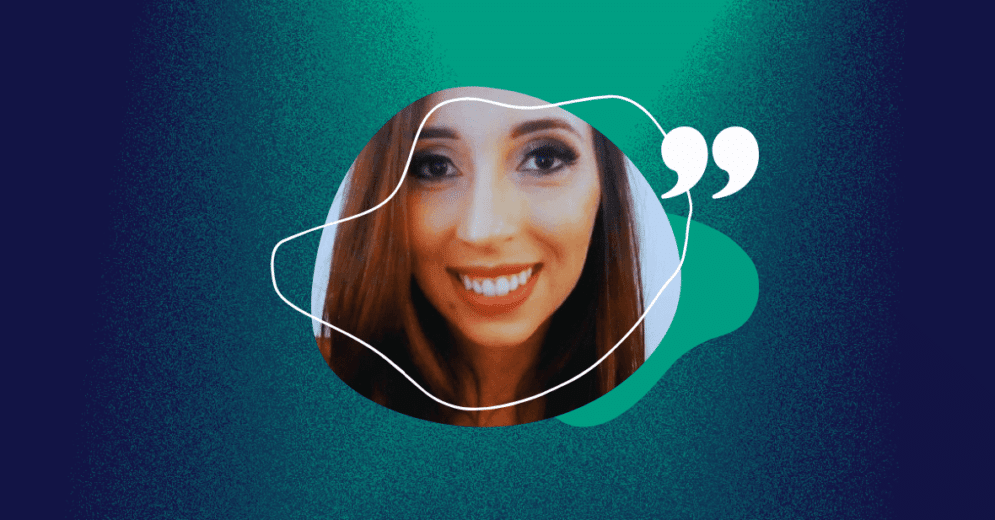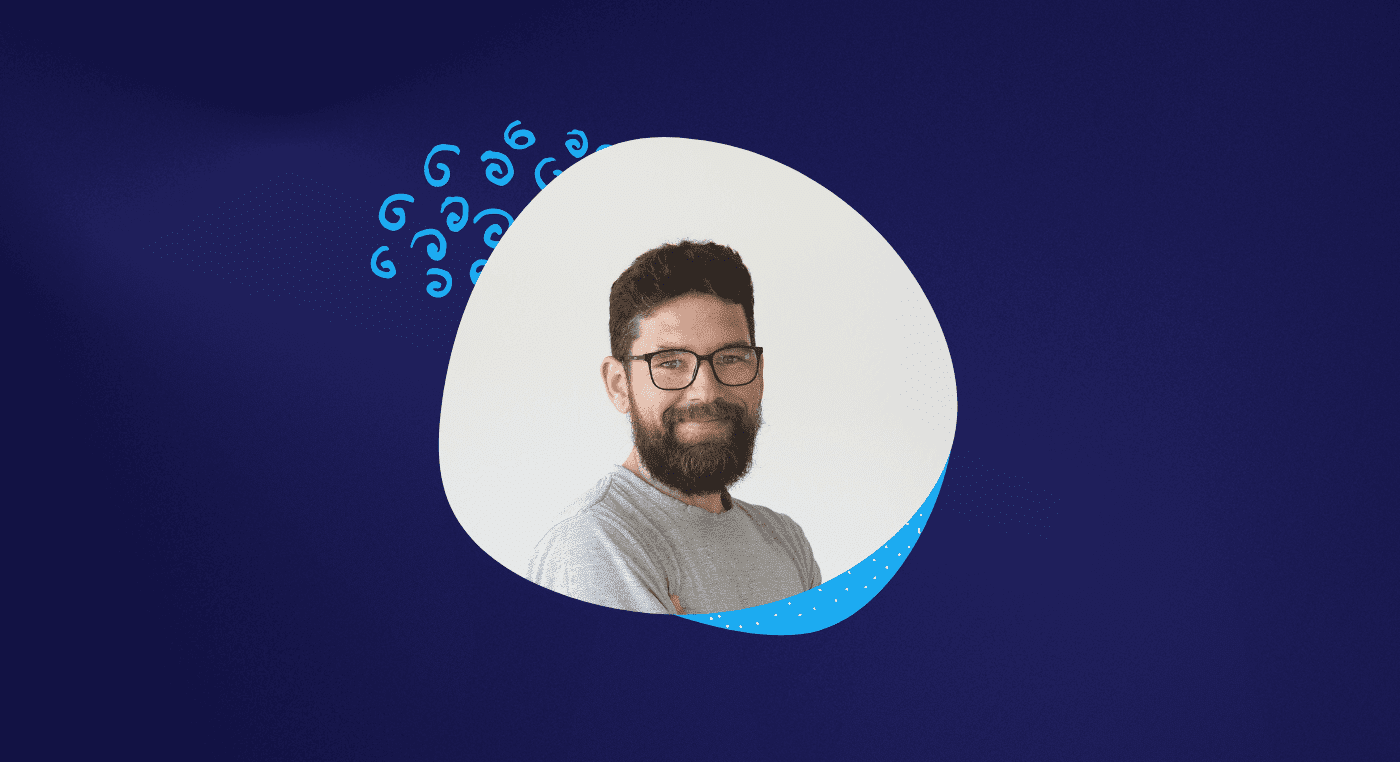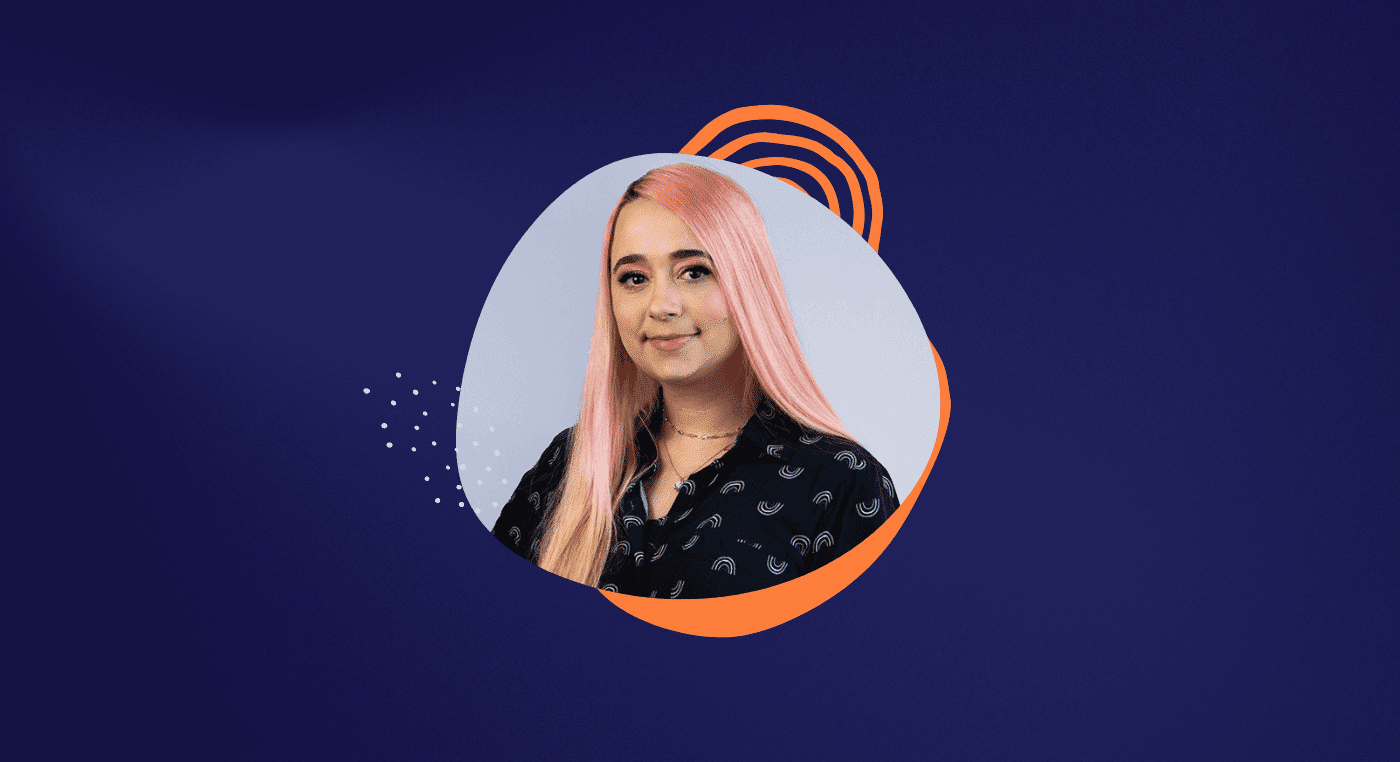Amanda Menoti shared her career journey from Architecture and Urbanism to UX Design.
She discusses what drew her to the field and how she made the most of the early stages of our MID program.
Additionally, Amanda touches on the soft skills that were crucial in securing her first opportunity in UX. Check it out and get inspired!
Amanda, thank you for taking the time to participate! Can you tell us a little bit about yourself?
Hello! Good morning, good afternoon, good evening! I'm not sure when you're reading this, haha.
My name is Amanda Menoti, I graduated in Architecture and Urbanism, but now I'm a UX/UI Designer and I'm loving this fantastic world of UX.

How was your transition from Architecture to UX Design?
I graduated in 2018 with a degree in Architecture and Urbanism, but I had lost my passion for the field. Despite this, I decided to stick with it and complete my degree.
I never truly enjoyed architecture, but I was very interested in urbanism. Unfortunately, it's a challenging field to find work in Brazil, and it's not a highly valued profession. As a result, it was tough to find a stable job, and most of the work available was low-paying freelance work.
Then, in 2020 came the pandemic and, with it, existential crises: what am I doing with my life? Who am I?
In this moment of reflection, I realized that I was putting a lot of energy into courses and specializations to enter a market where I did not see myself working in the long run.
So, I decided that I would change and explore other fields. I started researching some things online and stumbled upon Aela's Workshop, which helps transition to UX.
I don't remember how I stumbled upon the Workshop, but that's when I had my first contact with this universe and became very interested.
I participated in the Workshop but did not enroll in the MID yet, because I wanted to better understand UX. So, I took some free courses, read a lot, and fell in love with the field.
UX is completely different from architecture, but at the same time, I saw that I could use many of my previous experiences, especially the part about dealing with clients.
Architecture also helped me understand the structure of websites and apps and that there are technical limitations. I make a lot of comparisons in my head; if a house has a structure X, it costs a certain price, but a building is a totally different thing.
For apps, I follow the same logic; if I choose a certain component, the development might be easier; in other cases, it isn't. So, I continue to make a lot of comparisons in this sense.
Well, after taking a few free courses, the MID program opened up for enrollment, and I signed up! At this point, I was already in love with UX design. I even researched other courses, but I really liked Aela's approach.
That's when the journey to transition to UX officially began.
Reading Tip: 11 Reasons that Make the MID an Incredible UX/Product Design Program
What made you fall in love with UX Design?
I liked UX because it involves different subjects; it is a multidisciplinary field.
I have always been a multidisciplinary person. I remember that during the entrance exams, it was difficult to choose a course to follow. I liked history, numbers, and many other things. So I chose architecture, which is a course that involves a lot of things, history, calculus, arts, etc.
I liked the approach in UX because you don't get tired of one subject; there are many different things. In particular, what attracted me a lot was the psychology behind the area.
Another part that I also enjoy is dealing with business; I find it very interesting to study it.
So that's it; UX covers subjects I find interesting, and that deeply attracted me.
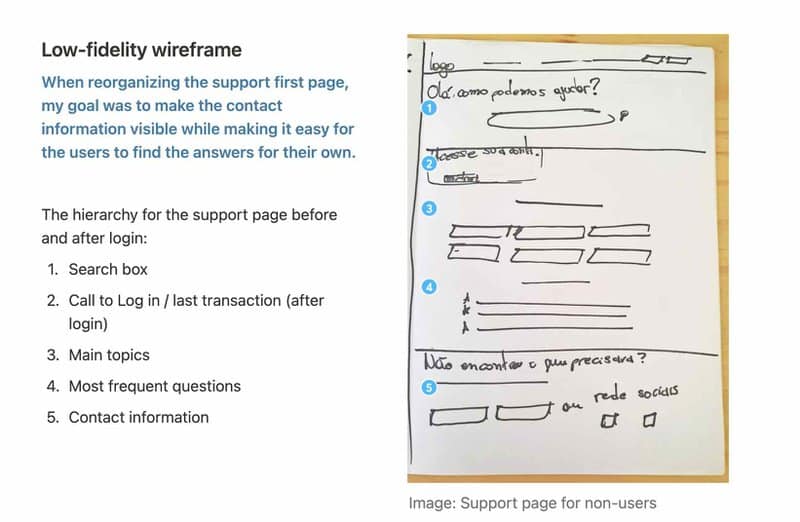
How did you manage to organize and focus on your studies? Was it difficult because of the pandemic?
I decided to devote myself 100% to the course. But I have my privileges, right. I live with my parents, so I was able to make that decision, take that break, and dedicate myself to studying.
Before starting the MID, I already had a routine of studying at home because I wasn't officially working with architecture. I did some freelancing, but I was also studying for a contest. So, I already had that discipline of sitting down and studying, and that helped me a lot.
Despite this, it wasn't easy. During the pandemic, there was a lot of stress and anxiety. There were days when I couldn't study, and that's okay.
Anyway, I devoted myself 100% to the MID and, besides the classes, I read a lot of complementary material to be able to delve into certain subjects.
So, I watched the classes and then delved into what I had doubts about or what I found most interesting.
That was it.
During this period, you must have read many books about UX and usability. Do you have any recommendations?
One that I am currently reading is Just Enough Research, by Erika Hall. I think it's not available in Portuguese, but for those who can read in English, it's a very interesting book because it talks about the routine of those who work with research.
She uses light and easy-to-understand language and brings up several points and situations that happen in the work routine, and how you can make research happen, even with a lack of time.
Another really cool book is The Design of Everyday Things, which is all about the basics. I read it back at the beginning of my journey and it helped me to open my mind to design-related things.
Despite architecture also valuing good design a lot, this book made me realize that sometimes when I can't use some product, maybe the fault is not mine, but bad design!
This book is very interesting for those who are starting out in the field.
Reading Tip: 5 Must-Read Books to Jumpstart Your Career in UX Design
When did you realize you were ready to look for jobs in UX Design?
I decided that I would begin to look for jobs after completing level 2 of the MID program. I know you guys recommend going up to level 4, but I really needed a job.
So, what I did was dedicate myself a lot to the program, especially in these first levels. In these initial projects, I always went the extra mile. For example, even in level zero, I conducted user research, even though it wasn't required. But I had time and the willingness to do it and dive into it.
In addition, I did some volunteer work in UX, which also helped me gain different perspectives.
I finished level 1 and took a break from studying to focus on my portfolio and resume.
And that was it. I started the MID in June 2020 and began looking for a job in March 2021. It was about 8 months of studying.
As I committed to doing more complete projects, doing and researching more than was required, I felt ready to start working in the job market.
I participated in UX communities and realized that the MID program is far superior to others out there. Not to sound conceited, but I saw cases of people with less in-depth knowledge than mine who were getting jobs and finding their place in the market.
So, I dedicated myself to my portfolio and applied for many, many, many jobs until I finally got my opportunity.
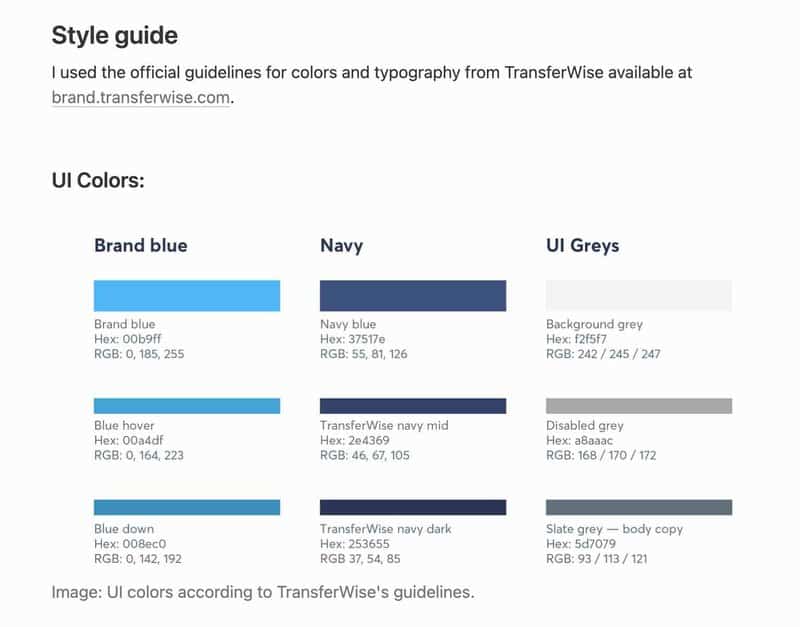
When you apply for many jobs, it's inevitable that you'll face rejection. How did you deal with it and stay committed until you landed a job?
It was a struggle, and then more struggle!
I was in this routine of applying for jobs and it was tough. You apply, and often there's no response. You change your resume, your portfolio, improve this, improve that.
The most frustrating part is when you don't get any response at all. Or on job sites, when you have to take giant tests. I've given up on jobs because of this because the test would take literally two hours! And in the end, I didn't even get a response, not even a rejection.
The job search process was very tiring. I spent three months just focused on that, and I won't lie, there were times when I wanted to give up. But I had to stay committed.
So, I tried to improve based on the feedback I received from interviews. Also, I looked for ways to stand out, not just with my resume or portfolio, but also in my presentation and speech. There's a great initiative called "Se Candidate, mulher!" (Apply, woman!), which gives tips on resumes, positioning during the interview, and more.
This type of knowledge helped me promote myself and communicate my story better. Knowing how to express ideas in an engaging way is important, even for UX design. So, I had to practice that.
Was there any detail that was crucial for you to get the position you are in today?
What helped me a lot was the communication part, without a doubt. I know that was an advantage in the interview.
I remember that I was very nervous that day. I had spent the weekend doing a test for another job and had already done an interview in the morning. I was anxious, tired, and worried because I really needed a job.
The process of applying for many jobs took a toll on my anxiety, so I was very nervous during the interview.
But fortunately, I managed to hold on, and my communication skills helped me a lot. The company's feedback was precisely related to my soft skills, and I realized that this is very important and carries a lot of weight in interviews.
That was it for this position. There was another opportunity, and it was the same thing; I was highly praised for the communication and organization of the project. I ended up passing on these two opportunities, actually!
Reading Tip: 9 Soft Skills to Stand Out as a Designer
So you ended up getting two job offers?
That's right! Look at the twists and turns that life takes!

How is it working with UX Design? What is your day-to-day like?
I am very happy, really! I am very fulfilled! Today I work as a UX/UI Designer, so I am on both ends.
Working and studying are very different things. In the course, you can do all the steps correctly, and have all the time in the world to do the project, it's a controlled environment.
At work, you have deadlines! I am in a consultancy, so I can't take all the time in the world to finish what I have to do.
But it's been a very cool experience, and I am learning a lot. I have only been here for 4 months, but I have already grown a lot! That's because I have real contact with UX, deal with clients, and have responsibilities, so I force myself to learn. If I don't know something, I sit down to study to understand how to do it.
So that's it, there is much faster growth at work than when you're just studying! I am loving it!
What is it like to work in a UX Design consultancy?
The work varies a lot depending on the project. There are times when we work end-to-end, from research to final delivery, but not every project covers all stages.
The routine ends up being different because everything changes. And I like working with consultancy precisely because every hour is a different project.
My first project was with a certain type of company, and the next project was with a completely different client!
I find that very interesting, I like to get to know other companies and products.
But I understand that it's a double-edged sword. Despite the dynamic environment, you can't go into as much depth.
When you work on just one product, you have the opportunity to get to know that product and the market in-depth; you see the product growing.
In consultancy, it's different. You have a short time, so you understand the business, but to a lesser depth. After we finish the project, I don't know if I'll see that product again and have the opportunity to improve it.
Reading Tip: The Importance of Curiosity in UX Design
What is the biggest lesson you would tell your past self, that you learned during your journey?
What struck me the most was the need for continuous learning and improvement.
As much as I do my best, I know that I still have a lot to improve. Technology is something that is always changing.
So we need to be constantly studying.
What I would say to my past self is: it won't be easy because you will have to study a lot and then keep on learning. But everything will work out!
Understanding that we always have to improve and that things don't come out perfect helps me let go of perfectionism.
I think that's the biggest lesson. UX is an area in which you can't be comfortable; you have to seek knowledge all the time!


